Phosphorus Management in Slovakia—A Case Study
Abstract
:1. Introduction
2. Materials and Methods
- Factors identification.
- Formation of matrix to compare the importance of factors.
- Construction of evaluation vector by evaluating each factor.
- Evaluation of the indicators:Si = ΠSij; j = 1, 2, ..., f,f–number of factors,Sij–single factor,
- Comparation of the indicatorsRi = (Si)1/f
3. Results
- traditionally obtained by mining phosphate rock,
- recovery and recycling,
- alternative.
3.1. Processing of Phosphate Rock
3.2. P Recovery and Recycling
- surface water;
- untreated wastewater;
- treated wastewater;
- sewage sludge;
- sewage sludge ash;
- slaughter waste;
- manure;
- urine;
- steelmaking slag.
- Chemical precipitation of wastewater, that is based on the addition of iron or aluminum chlorides or sulphates to wastewater resulting into insoluble phosphate salts removable by sedimentation; about 90% of P can be recovered from wastewater;
- Enhanced biological removal from wastewater, that is based on removal of P by microorganisms from wastewater; more than 90% of P can be recovered from wastewater;
- Struvite formation from wastewater by adding soluble magnesium chloride, increasing pH to 8–9 by sodium hydroxide, thus forming struvite crystals; 40% of wastewater can be treated this way with a 90% efficiency;
- Calcium phosphate formation from wastewater by adding calcium hydroxide and increasing pH to 9 thus precipitating calcium phosphate;
- Iron phosphate formation from wastewater in the form of vivianite [iron(II) phosphate] by anaerobic digestion under neutral pH, vivianite can be separated from sludgy magnetically;
- Sewage sledge treatment at wastewater treatment plants, there is a number of methods for direct recovery, by wet-chemical or thermochemical treatment; about 90% of P can be recovered;
- Sewage sludge ash, that is rich in P, about 9–13.1%, catches about 87% of P in influent wastewater, P can be recovered by wet-chemical or thermochemical treatment; about 30–40% of P can be recovered.
- Animal-delivered waste streams—especially livestock manure that can be processed by anaerobic digestion, followed by thermal treatment and processed as biochar or ash, or it that can be dewatered, the final liquid can be precipitated for calcium phosphate or struvite; may contain a maximum of 30% P;
- Category 1 animal by-products and derived products (meat and bone meal), when incinerated to valorize energy content and hygienize, it mostly comprises Ca5(PO4)3OH and Ca3(PO4)2, contains 15–19% of P;
- Steelmaking slag, there is a number of methods for P recovery, e.g., capillary action separation, carbothermic reduction, magnetic separation, aqueous dissolution, reductive melting, etc.; it contains 0.3–1.7% of P.
3.3. Current State in Slovakia
3.3.1. P Export and Import
3.3.2. Mining
3.3.3. Surface Water and Sediments
3.3.4. Wastewater Production and Treatment
3.3.5. Sewage Sludge and Sewage Sludge Ash
3.3.6. Animal and Slaughter Waste
3.3.7. Steelmaking Slag
3.3.8. Available P Sources
3.4. SWOT Analysis
4. Discussion
5. Conclusions
- no P deposit mined;
- a low number of potential P deposits;
- no P recovered from available sources;
- reduction of cattle breeding and manure and urine production;
- a lack of governmental support;
- instability in steel production;
- significant dependence on P import.
Author Contributions
Funding
Institutional Review Board Statement
Informed Consent Statement
Data Availability Statement
Acknowledgments
Conflicts of Interest
References
- Smol, M. The importance of sustainable phosphorus management in the circular economy (CE) model: The Polish case study. J. Mater. Cycles Waste Manag. 2019, 21, 227–238. [Google Scholar] [CrossRef] [Green Version]
- Yu, H.; Lu, X.; Miki, T.; Matsubae, K.; Sasaki, Y.; Nagasaka, T. Sustainable phosphorus supply by phosphorus recovery from steelmaking slag: A critical review. Resour. Conserv. Recycl. 2022, 180, 106203. [Google Scholar] [CrossRef]
- Jia, Y.; Zeng, W.; Fan, Z.; Meng, Q.; Liu, H.; Peng, Y. An effective titanium salt dosing strategy for phosphorus removal from wastewater: Synergistic enhancement of chemical and biological treatment. Sci. Total Environ. 2022, 842, 156960. [Google Scholar] [CrossRef] [PubMed]
- Theng, V.; Hashimoto, K.; Uk, S.; Tanaka, T.; Yoshioka, H.; Yoshimura, C. Hydrodynamics-based modeling of phosphorus balance and dynamics in a large tropical floodplain. Environ. Adv. 2022, 7, 100176. [Google Scholar] [CrossRef]
- Lyon, C.; Cordell, D.; Jacobs, B.; Martin-Ortega, J.; Marshall, R.; Camargo-Valero, M.A.; Sherry, E. Five pillars for stakeholder analyses in sustainability transformations: The global case of phosphorus. Environ. Sci. Policy 2020, 107, 80–89. [Google Scholar] [CrossRef]
- Scholz, R.W.; Wellmer, F.W. Endangering the integrity of science by misusing unvalidated models and untested assumptions as facts: General considerations and the mineral and phosphorus scarcity fallacy. Sustain. Sci. 2021, 16, 2069–2086. [Google Scholar] [CrossRef]
- Cordell, D.; Rosemarin, A.; Schröder, J.J.; Smit, A.L. Towards global phosphorus security: A systems framework for phosphorus recovery and reuse options. Chemosphere 2011, 84, 747–758. [Google Scholar] [CrossRef]
- Sadhukhan, J.; Christensen, M. An In-Depth Life Cycle Assessment (LCA) of Lithium-Ion Battery for Climate Impact Mitigation Strategies. Energies 2021, 14, 5555. [Google Scholar] [CrossRef]
- Gavurova, B.; Kovac, V.; Drabik, P.; Gomory, M. Exploration of Disparities in Environmental Activities of European Countries from Year 2006 to Year 2016. Acta Montan. Slovaca 2019, 24, 376–390. [Google Scholar]
- Krajčík, V. The readiness of Small and Medium-sized Enterprises (SMEs) for the digitalization of industry: Evidence from the Czech Republic. Acta Montan. Slovaca 2021, 26, 761–772. [Google Scholar]
- Smol, M.; Marcinek, P.; Duda, J.; Szołdrowska, D. Importance of Sustainable Mineral Resource Management in Implementing the Circular Economy (CE) Model and the European Green Deal Strategy. Resources 2020, 9, 55. [Google Scholar] [CrossRef]
- Reichl, C.; Schatz, M. World Mining Data 2020. Federal Ministry of Agriculture, Regions and Tourism: Vienna, Austria, 2020. [Google Scholar]
- Valenčíková, M.; Marišová, E. Implementation of circular economy principles affected by a market entity: Nitra study. In Zborník Vedeckých Prác II z Projektu VEGA 1/0705/19 „Zodpovednosť Vybraných Trhových Subjektov ako Významný Determinant Aplikácie Princípov Kruhovej Ekonomiky na Slovensku“; Ekonomická fakulta Univerzity Mateja Bela v Banskej Bystrici, Belianum: Banská Bystrica, Slovakia, 2021; ISBN 978-80-557-1920-7. [Google Scholar]
- Razminienė, K.; Vinogradova, I.; Tvaronavičienė, M. Clusters in Transition to Circular Economy: Evaluation of Relation. Acta Montan. Slovaca 2021, 26, 455–465. [Google Scholar]
- Alcántara-Plazola, J.J.; de la Barrera, E. Quantification of embedded phosphorus in Mexican agriculture. Sustain. Prod. Consum. 2021, 28, 824–828. [Google Scholar] [CrossRef]
- Lauri, L.S.; Brown, T.; Kalvig, P.; Sievers, H. Identification and Quantification of Primary CRM Resources in Europe. SCRREEN D3.1: Identification and Quantification of Primary CRM Resources in Europe. Available online: https://ec.europa.eu/research/participants/documents/downloadPublic?documentIds=080166e5b8f6231d&appId=PPGMS (accessed on 7 January 2022).
- Kroiss, H.; Rechberger, H.; Egle, L. Phosphorus in Water Quality and Waste Management. In Integrated Waste Management—Volume II; Kumar, S., Ed.; IntechOpen: London, UK, 2011. [Google Scholar]
- Khan, M.; Mohammad, F. Eutrophication: Challenges and Solutions. In Eutrophication: Causes, Consequences and Control; Ansari, A., Gill, S., Eds.; Springer: Dordrecht, Germany, 2014. [Google Scholar]
- Scolozzi, R.; Schirpke, U.; Morri, E.; D’Amato, D.; Santolini, R. Ecosystem services-based SWOT analysis of protected areas for conservation strategies. J. Environ. Manag. 2014, 146, 543–551. [Google Scholar] [CrossRef] [PubMed]
- Gavurova, B.; Kocisova, K.; Behun, M.; Tarhanicova, M. Environmental performance in OECD countries: A non-radial DEA approach. Acta Montan. Slovaca 2018, 23, 206–215. [Google Scholar]
- Rabe, M.; Streimikiene, D.; Wojciechowski, A.; Sochacka, M. Regional Energy Planning: Optimising Geothermal Energy Production Under Natural Conditions. Acta Montan. Slovaca 2021, 26, 784–795. [Google Scholar]
- Siwiec, D.; Pacana, A. Identifying the source of the problem by using implemented the FAHP method in the selected quality management techniques. Prod. Eng. Arch. 2020, 26, 5–10. [Google Scholar] [CrossRef]
- Siwiec, D.; Pacana, A. Model Supporting Development Decisions by Considering Qualitative–Environmental Aspects. Sustainability 2021, 13, 9067. [Google Scholar] [CrossRef]
- Ulewicz, R.; Siwiec, D.; Pacana, A.; Tutak, M.; Brodny, J. Multi-Criteria Method for the Selection of Renewable Energy Sources in the Polish Industrial Sector. Energies 2021, 14, 2386. [Google Scholar] [CrossRef]
- Bakalár, T.; Pavolová, H.; Tokarčík, A. Analysis and Model of River Basin Sustainable Management by SWOT and AHP Methods. Water 2021, 13, 2427. [Google Scholar] [CrossRef]
- Kurttila, M.; Pesonen, M.; Kangas, J.; Kajanus, M. Utilizing the analytic hierarchy process (AHP) in SWOT analysis—A hybrid method and its application to a forest-certification case. For. Policy Econ. 2000, 1, 41–52. [Google Scholar] [CrossRef]
- Bakalár, T.; Pavolová, H.; Hajduová, Z.; Lacko, R.; Kyšeľa, K. Metal recovery from municipal solid waste incineration fly ash as a tool of circular economy. J. Clean. Prod. 2021, 302, 126977. [Google Scholar] [CrossRef]
- White, T.H., Jr.; Barros, Y.d.M.; Develey, P.F.; Llerandi-Román, I.C.; Monsegur-Rivera, O.A.; Trujillo-Pinto, A.M. Improving reintroduction planning and implementation through quantitative SWOT analysis. J. Nat. Conserv. 2015, 28, 149–159. [Google Scholar] [CrossRef]
- Saaty, R.W. The analytic hierarchy process—What it is and how it is used. Math. Modell. 1987, 9, 161–176. [Google Scholar] [CrossRef] [Green Version]
- Jupp, A.R.; Beijer, S.; Narain, G.C.; Schipper, W.; Slootweg, J.C. Phosphorus recovery and recycling—Closing the loop. Chem. Soc. Rev. 2021, 50, 87–101. [Google Scholar] [CrossRef] [PubMed]
- Ohtake, H.; Tsuneda, S. Phosphorus Recovery and Recycling; Springer Nature Singapore Pte Ltd.: Singapore, 2018. [Google Scholar]
- Gantner, O.; Schipper, W.; Weigand, J.J. Spotlight 8: Technological use of phosphorus: The non-fertilizer, non-feed and non-detergent domain. In Sustainable Phosphorus Management; Scholz, R.W., Roy, A.H., Brand, F.S., Hellums, D.T., Ulrich, A.E., Eds.; Springer: Dordrecht, Holland, 2014; pp. 247–250. [Google Scholar]
- Tayibi, H.; Choura, M.; Lopez, F.A.; Alguacil, F.J.; Lopez-Delgado, A. Environmental impact and management of phosphogypsum. J. Environ. Manage. 2009, 90, 2377–2386. [Google Scholar] [CrossRef] [Green Version]
- Rychkov, V.N.; Kirillov, E.V.; Kirillov, S.V.; Semenishchev, V.S.; Bunkov, G.M.; Botalov, M.S.; Smyshlyaev, D.V.; Malyshev, A.S. Recovery of rare earth elements from phosphogypsum. J. Clean. Prod. 2018, 196, 674–681. [Google Scholar] [CrossRef]
- Van Dijk, K.C.; Lesschen, J.P.; Oenema, O. Phosphorus flows and balances of the European Union Member States. Sci. Total Environ. 2016, 542, 1078–1093. [Google Scholar] [CrossRef]
- Morse, G.; Brett, S.; Guy, J.; Lester, J. Review: Phosphorus removal and recovery technologies. Sci. Total Environ. 1998, 212, 69–81. [Google Scholar] [CrossRef]
- Liao, P.H.; Wong, W.T.; Lo, K.V. Release of phosphorus from sewage sludge using microwave technology. J. Environ. Eng. Sci. 2005, 4, 77–81. [Google Scholar] [CrossRef] [Green Version]
- Doyle, J.D.; Parsons, S.A. Struvite formation, control and recovery. Water Res. 2002, 36, 3925–3940. [Google Scholar] [CrossRef]
- Desmidt, E.; Ghyselbrecht, K.; Zhang, Y.; Pinoy, L.; Van der Bruggen, B.; Verstraete, W.; Rabaey, K.; Meesschaert, B. Global Phosphorus Scarcity and Full-Scale P-Recovery Techniques: A Review. Crit. Rev. Environ. Sci. Technol. 2014, 45, 336–384. [Google Scholar] [CrossRef]
- Wu, Y.; Luo, J.; Zhang, Q.; Aleem, M.; Fang, F.; Xue, Z.; Cao, J. Potentials and challenges of phosphorus recovery as vivianite from wastewater: A review. Chemosphere 2019, 226, 246–258. [Google Scholar] [CrossRef] [PubMed]
- Herzel, H.; Krüger, O.; Hermann, L.; Adam, C. Sewage sludge ash--A promising secondary phosphorus source for fertilizer production. Sci. Total Environ. 2016, 542, 1136–1143. [Google Scholar] [CrossRef] [PubMed]
- Egle, L.; Rechberger, H.; Krampe, J.; Zessner, M. Phosphorus recovery from municipal wastewater: An integrated comparative technological, environmental and economic assessment of P recovery technologies. Sci. Total Environ. 2016, 571, 522–542. [Google Scholar] [CrossRef] [Green Version]
- Krüger, O.; Grabner, A.; Adam, C. Complete Survey of German Sewage Sludge Ash. Environ. Sci. Technol. 2014, 48, 11811–11818. [Google Scholar] [CrossRef]
- Wang, Q.; Liao, Z.; Yao, D.; Yang, Z.; Wu, Y.; Tang, C. Phosphorus immobilization in water and sediment using iron-based materials: A review. Sci. Total Environ. 2021, 767, 144246. [Google Scholar] [CrossRef]
- Roy, S.; Guanglei, Q.; Zuniga-Montanez, R.; Williams, R.B.H.; Wuertz, S. Recent advances in understanding the ecophysiology of enhanced biological phosphorus removal. Curr. Opin. Biotechnol. 2021, 67, 166–174. [Google Scholar] [CrossRef]
- Withers, P.J.A.; van Dijk, K.C.; Neset, T.S.S.; Nesme, T.; Oenema, O.; Rubæk, G.H.; Schoumans, O.F.; Smit, B.; Pellerin, S. Stewardship to tackle global phosphorus inefficiency: The case of Europe. Ambio 2015, 44, 193–206. [Google Scholar] [CrossRef] [Green Version]
- Coutand, M.; Cyr, M.; Deydier, E.; Guilet, R.; Clastres, P. Characteristics of industrial and laboratory meat and bone meal ashes and their potential applications. J. Hazard. Mater. 2008, 150, 522–532. [Google Scholar] [CrossRef]
- Numviyimana, C.; Warchoł, J.; Ligas, B.; Chojnacka, K. Nutrients Recovery from Dairy Wastewater by Struvite Precipitation Combined with Ammonium Sorption on Clinoptilolite. Materials 2021, 14, 5822. [Google Scholar] [CrossRef] [PubMed]
- Cempa, M.; Olszewski, P.; Wierzchowski, K.; Kucharski, P.; Białecka, B. Ash from Poultry Manure Incineration as a Substitute for Phosphorus Fertiliser. Materials 2022, 15, 3023. [Google Scholar] [CrossRef] [PubMed]
- Statistical Office of the Slovak Republic: Phosphorus Export/Import, Livestock Inventory 2010–2019. Available online: http://datacube.statistics.sk (accessed on 10 January 2022).
- Petráš, M.; (Obvodný banský úrad Košice, District office of Central Mining Authority in Košice, Košice, Slovakia). Personal communication, 2022.
- Bartos, V.; Vochozka, M.; Janíková, J. Fair value in squeeze-out of large mining companies. Acta Montan. Slovaca 2021, 26, 712–731. [Google Scholar]
- Bodiš, D.; Rapant, S.; Khun, M.; Klukanová, A.; Lexa, J.; Mackových, D.; Marsina, K.; Pramuka, S.; Vozár, J. Geochemický Atlas Slovenskej Republiky, časť VI: Riečne Sediment/Geochemical Atlas of the Slovak Republic, Part VI: Stream Sediments; Štátny geologický ústav Dionýza Štúra: Bratislava, Slovakia, 2011. [Google Scholar]
- Matej-Łukowicz, K.; Wojciechowska, E.; Strycharz, J.; Szubska, M.; Kuliński, K.; Bełdowski, J.; Winogradow, A. Can Bottom Sediments Be a Prospective Fertilizing Material? A Chemical Composition Analysis for Potential Reuse in Agriculture. Materials 2021, 14, 7685. [Google Scholar] [CrossRef]
- SHMÚ. Monitoring of Surface Water Quality. Available online: https://www.shmu.sk/sk/?page=1&id=kvalita_povrchovych_vod (accessed on 12 January 2022).
- SHMÚ. Vodohospodárska Bilancia SR: Vodohospodárska Bilancia Množstva Povrchových vôd v Roku 2019/Water Management Balance of the Slovak Republic: Water Management Balance of Surface Water in 2019; Slovenský hydrometeorologický ústav: Bratislava, Slovakia, 2020. [Google Scholar]
- Šipikalová, H.; Škoda, P.; Demeterová, B.; Liová, S. Rok povodní 2010 a jeho miesto v hydrologických pozorovaniach na Slovensku / The year of floods 2010 and its place in hydrological observations in Slovakia. In Proceedings of the Manažment Povodí a Povodňových Rizík, Častá-Papiernička, Slovakia, 6–8 December 2011. [Google Scholar]
- Ľoch, B.; Bakalár, T.; Róth, B. Water quality assessment of River Hornád, Slovakia. Res. J. Min. 2017, 1, 72–79. [Google Scholar]
- State of the Environment Report of the Slovak Republic 2010–2019. Available online: https://www.enviroportal.sk/spravy/kat21 (accessed on 20 January 2022).
- Central Control and Testing Institute in Agriculture in Bratislava. Available online: https://www.uksup.sk/kalkulacky/skladovekapacity/index.php (accessed on 21 January 2022).
- VAS—Animal Rendering Plant. Available online: https://www.vas-ml.sk/sk/produkty/ (accessed on 18 January 2022).
- Legemza, J.; Miškufová, A.; Havlík, T. Environmental Technologies in the Iron and Steel Industry. Životné prostredie 2018, 52, 152–163. [Google Scholar]
- U.S. Steel. Demetalizovaná Oceliarenská Troska/Demetallized Steelmaking Slag. Available online: https://www.usske.sk/sk/produkty/vedlajsie-produkty/demetalizovana-oceliarenska-troska (accessed on 25 January 2022).
- Sapek, B. Akumulacja i uwalnianie fosforu w glebach—źródła, procesy. Woda-Środowisko-Obszary Wiejskie 2014, 14, 77–100. [Google Scholar]
- Burkowicz, A.; Galos, K.A.; Guzik, K.; Kamyk, J.; Kot-Niewiadomska, A.; Lewicka, E.; Smakowski, T.; Szlugaj, J. Minerals Yearbook of Poland 2013; Polish Geological Institute—National Research Institute: Warsaw, Poland, 2013.
- Sustainable Management of Phosphorus in the Baltic Region (InPhos). Available online: www.min-pan.krakow.pl/projekty/en/2019/07/17/english-zrownowazone-zarzadzanie-fosforem-w-regionie-baltyckim/ (accessed on 11 June 2022).
- Optimising Bio-Based Fertilisers in Agriculture—Providing a Knowledge Basis for New Policies (LEX4BIO). Available online: www.lex4bio.eu (accessed on 11 June 2022).
- Market Ready Technologies for P-Recovery from Municipal Wastewater (PhosForce). Available online: www.min-pan.krakow.pl/projekty/en/2019/07/17/technologia-odzysku-fosforu-ze-sciekow-komunalnych/ (accessed on 11 June 2022).
- Towards Circular Economy in Wastewater Sector: Knowledge Transfer and Identification of the Recovery Potential for Phosphorus in Poland (CEPhosPOL). Available online: www.min-pan.krakow.pl/projekty/en/2019/07/16/program-stypendialny-im-mieczyslawa-bekkera/ (accessed on 11 June 2022).

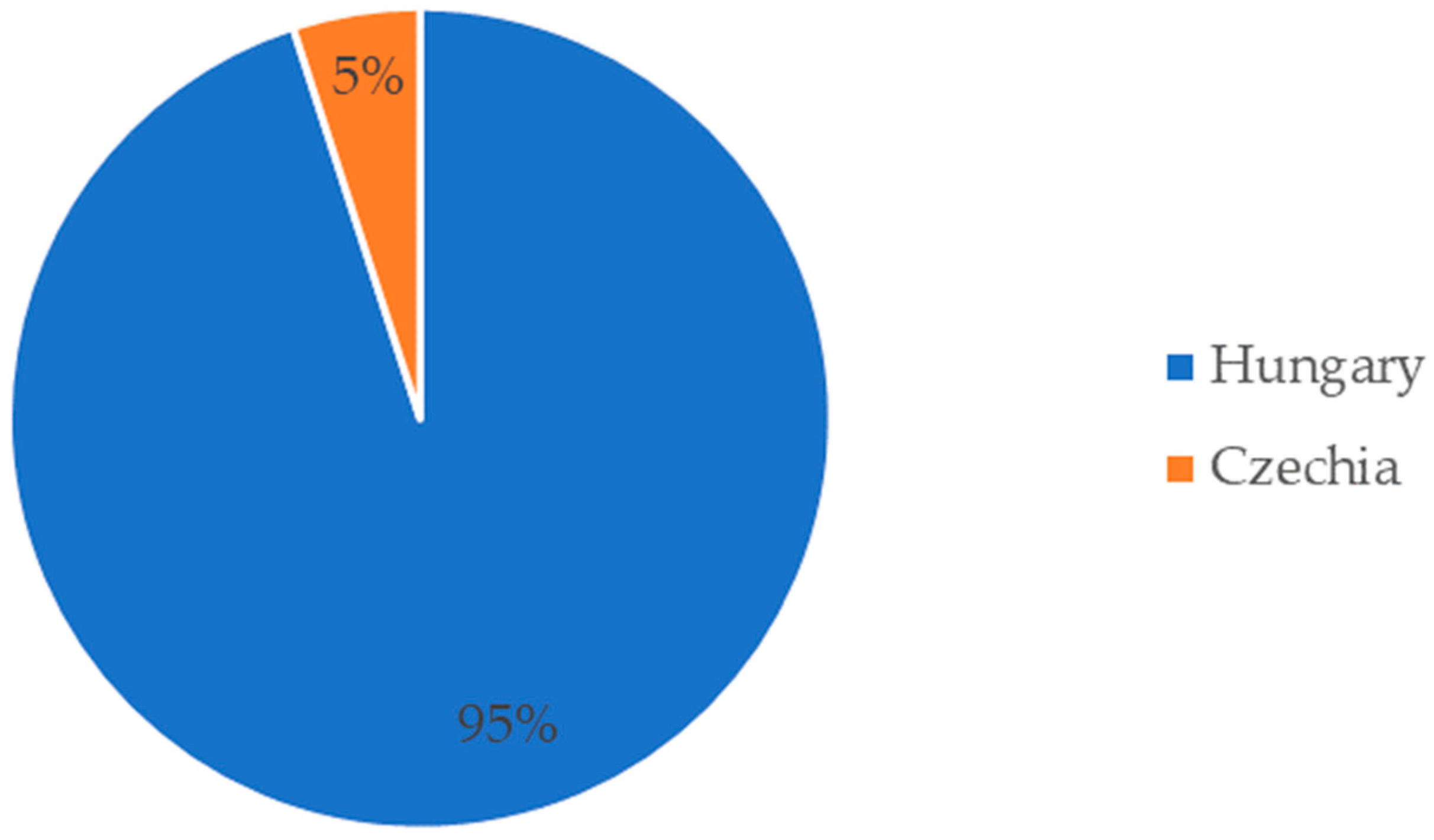
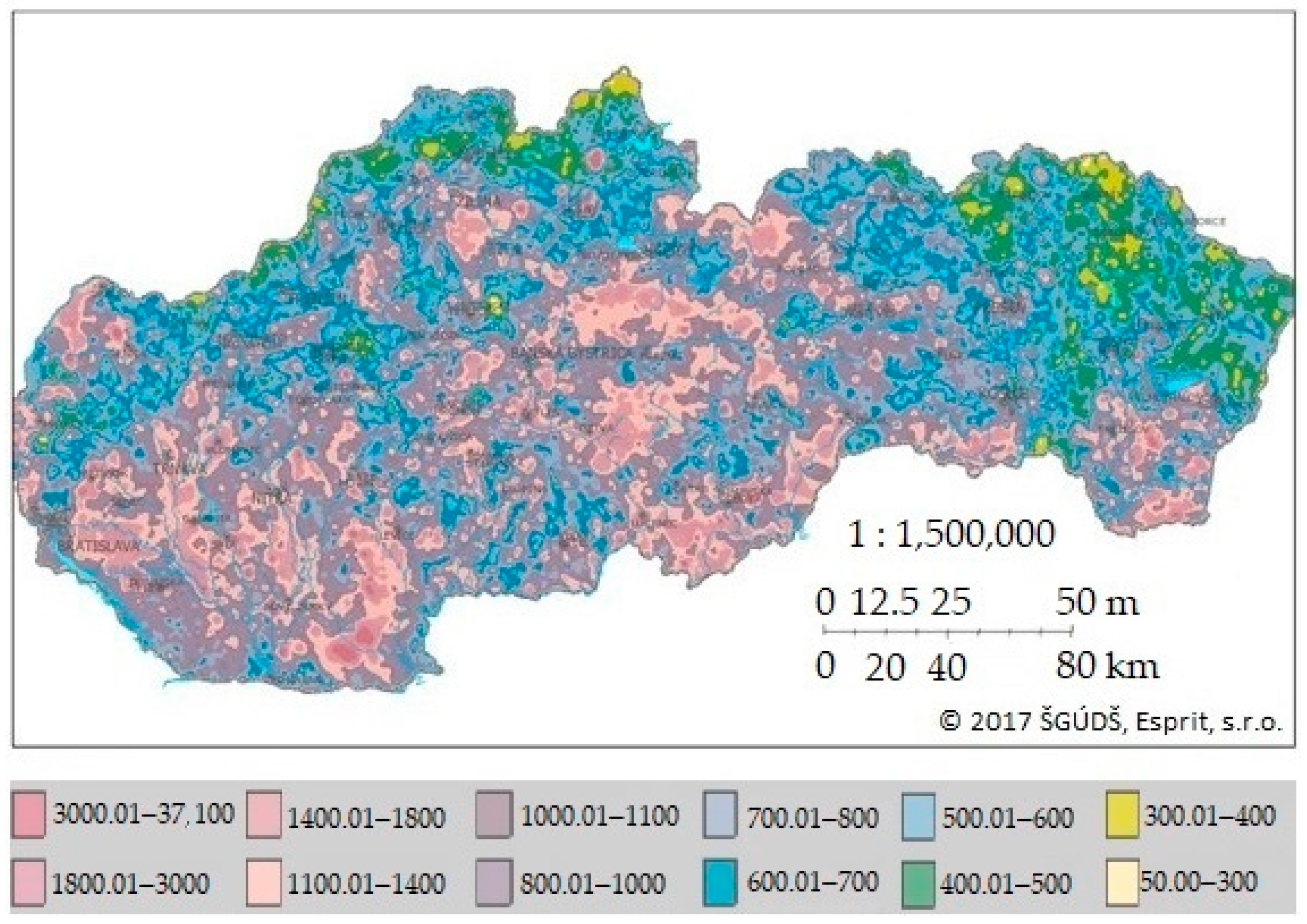
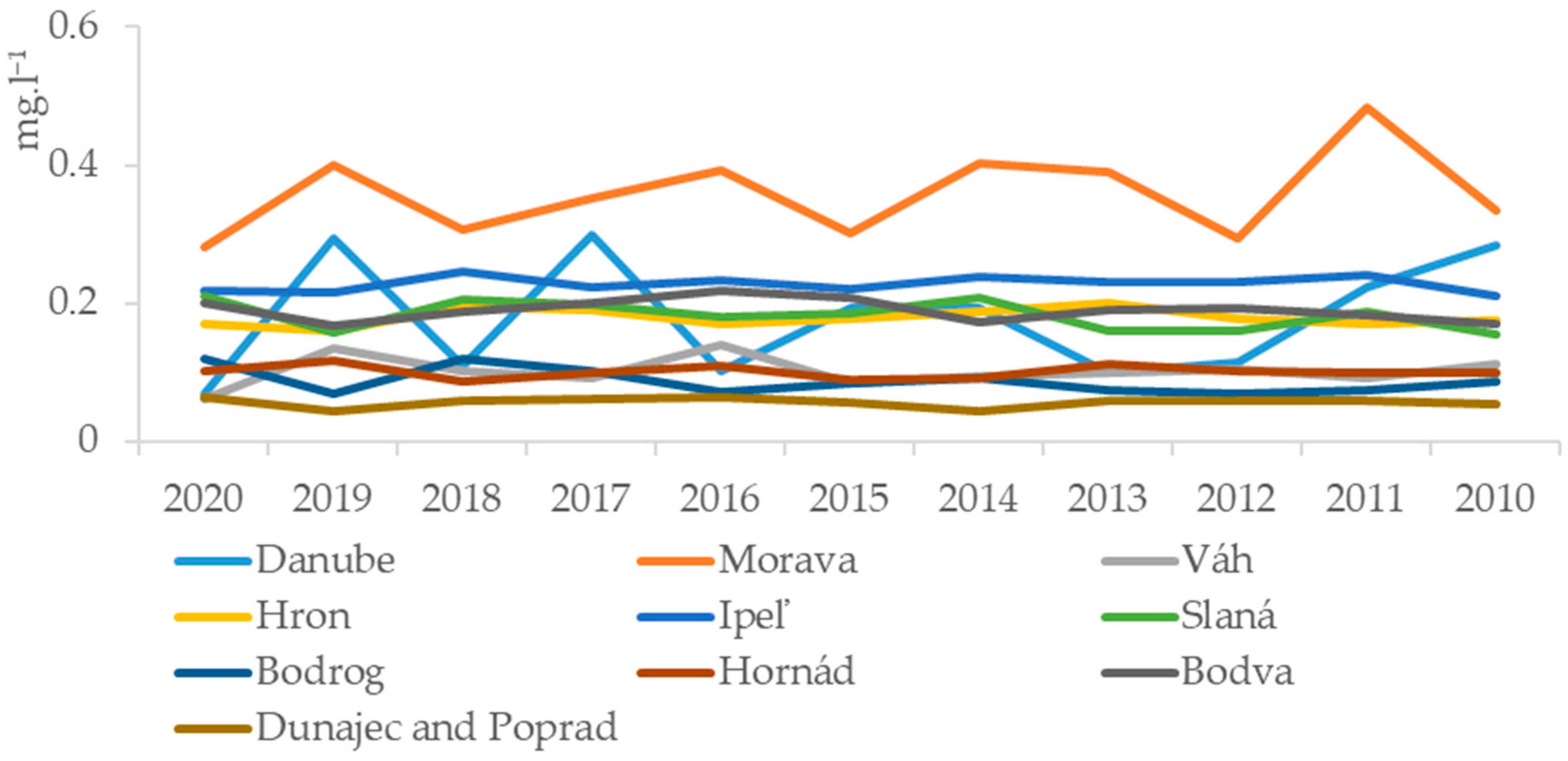
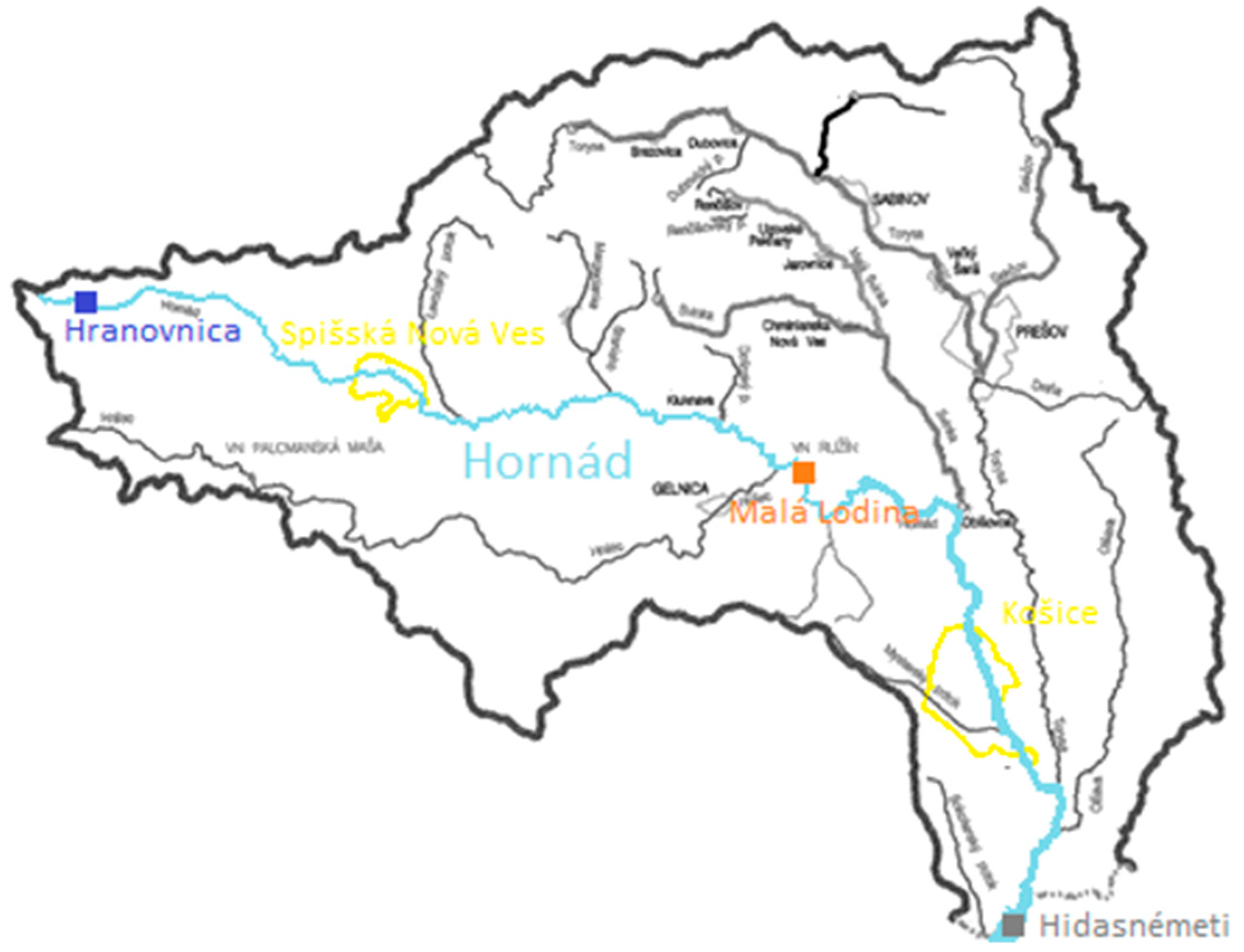
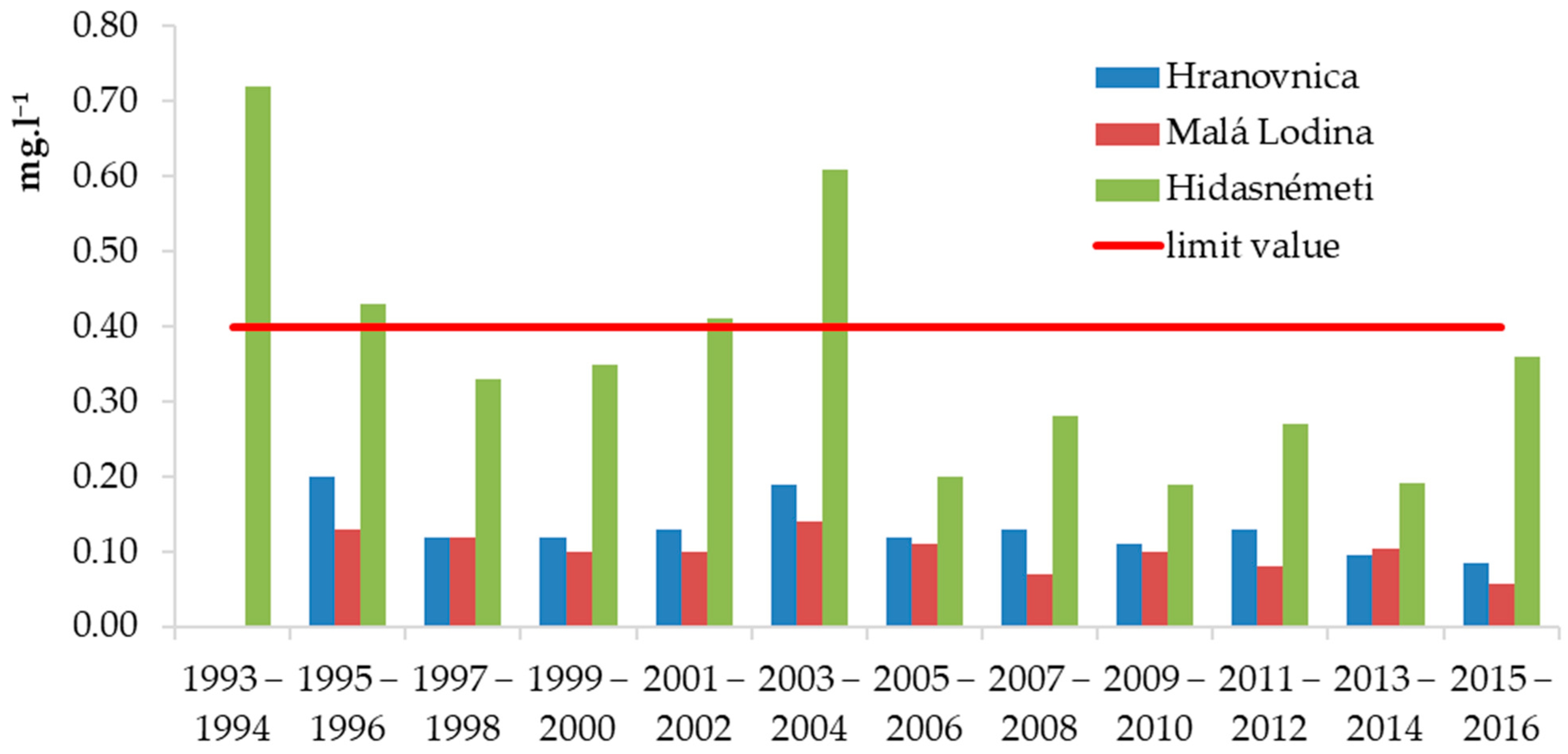
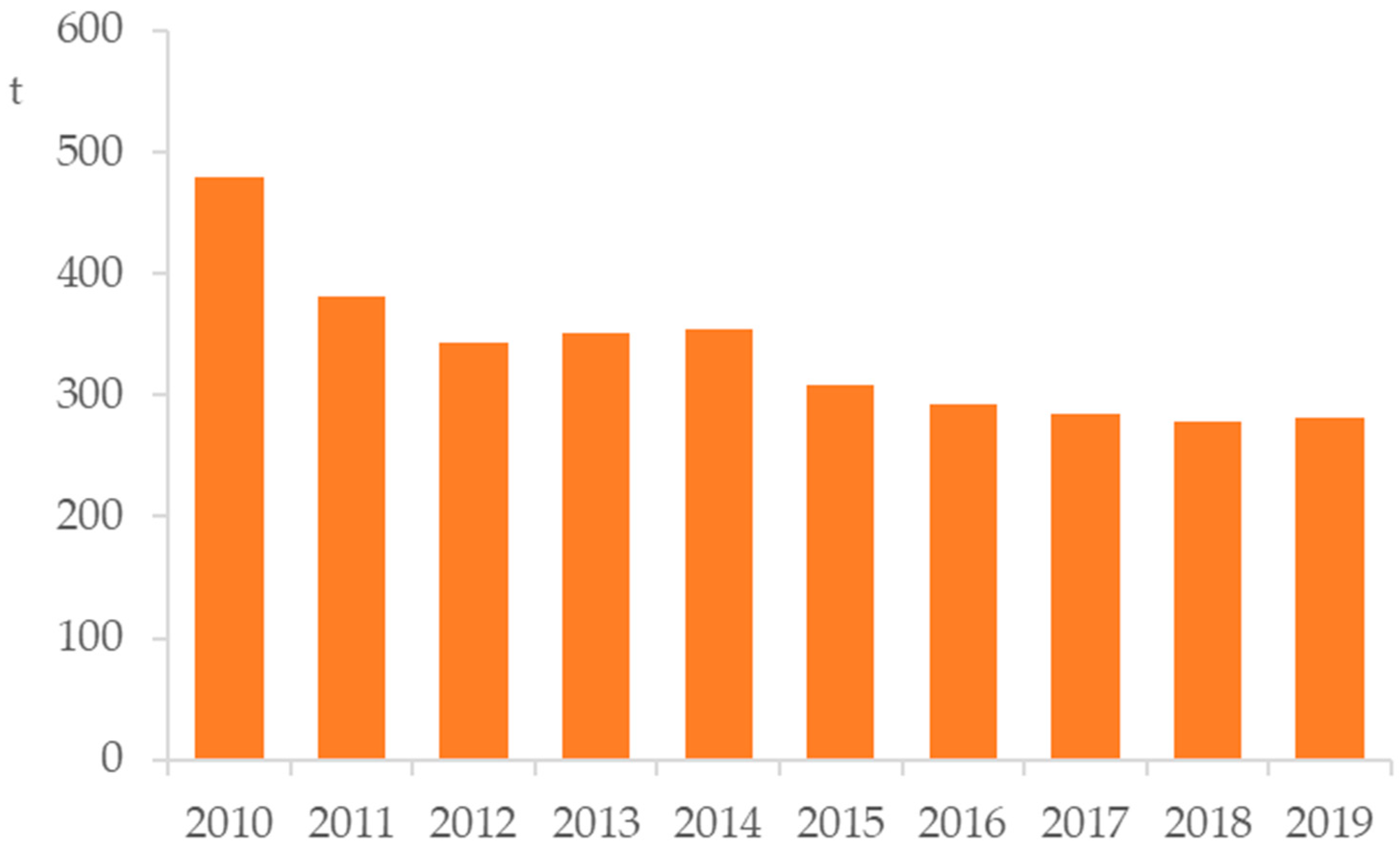

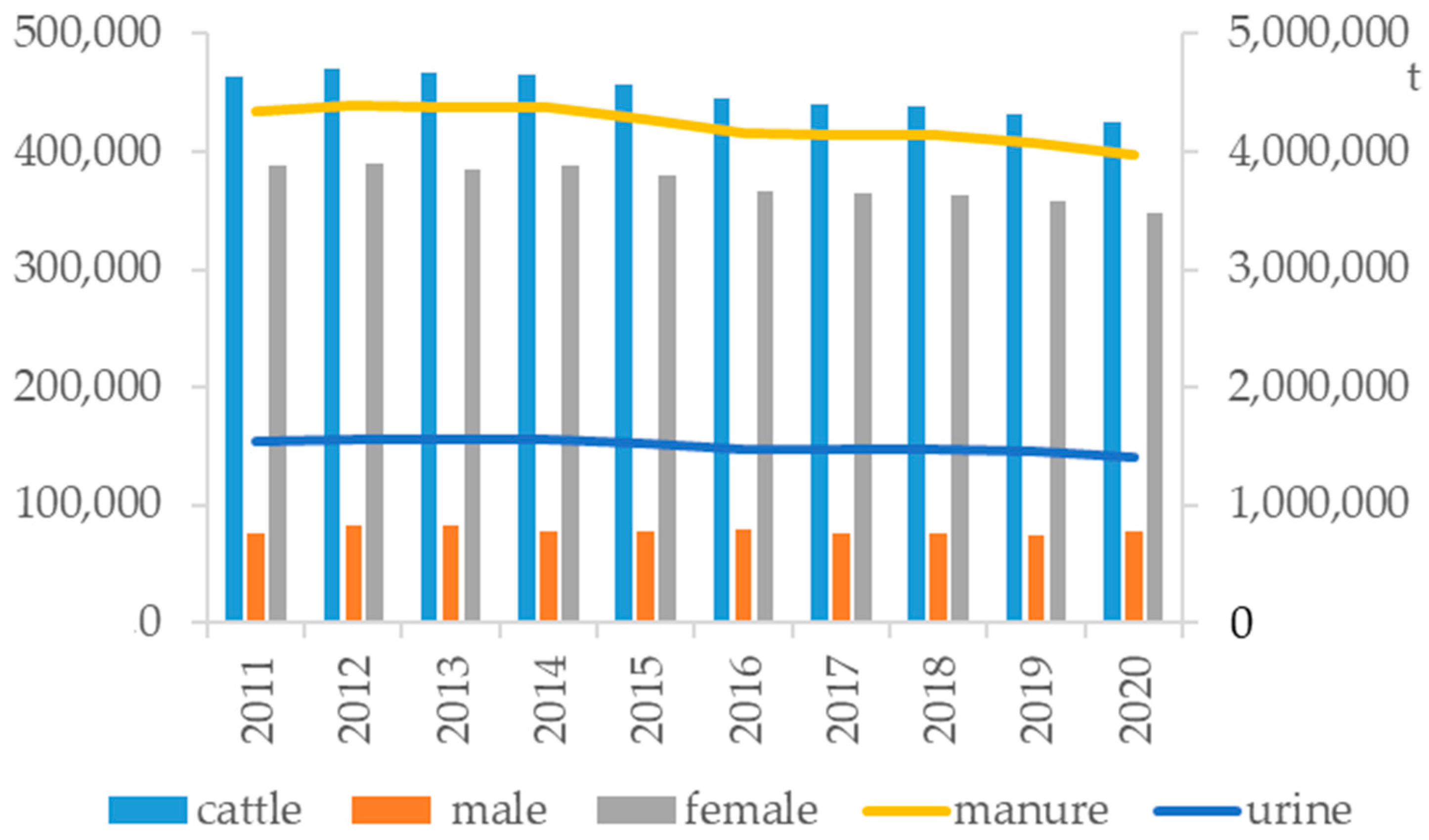
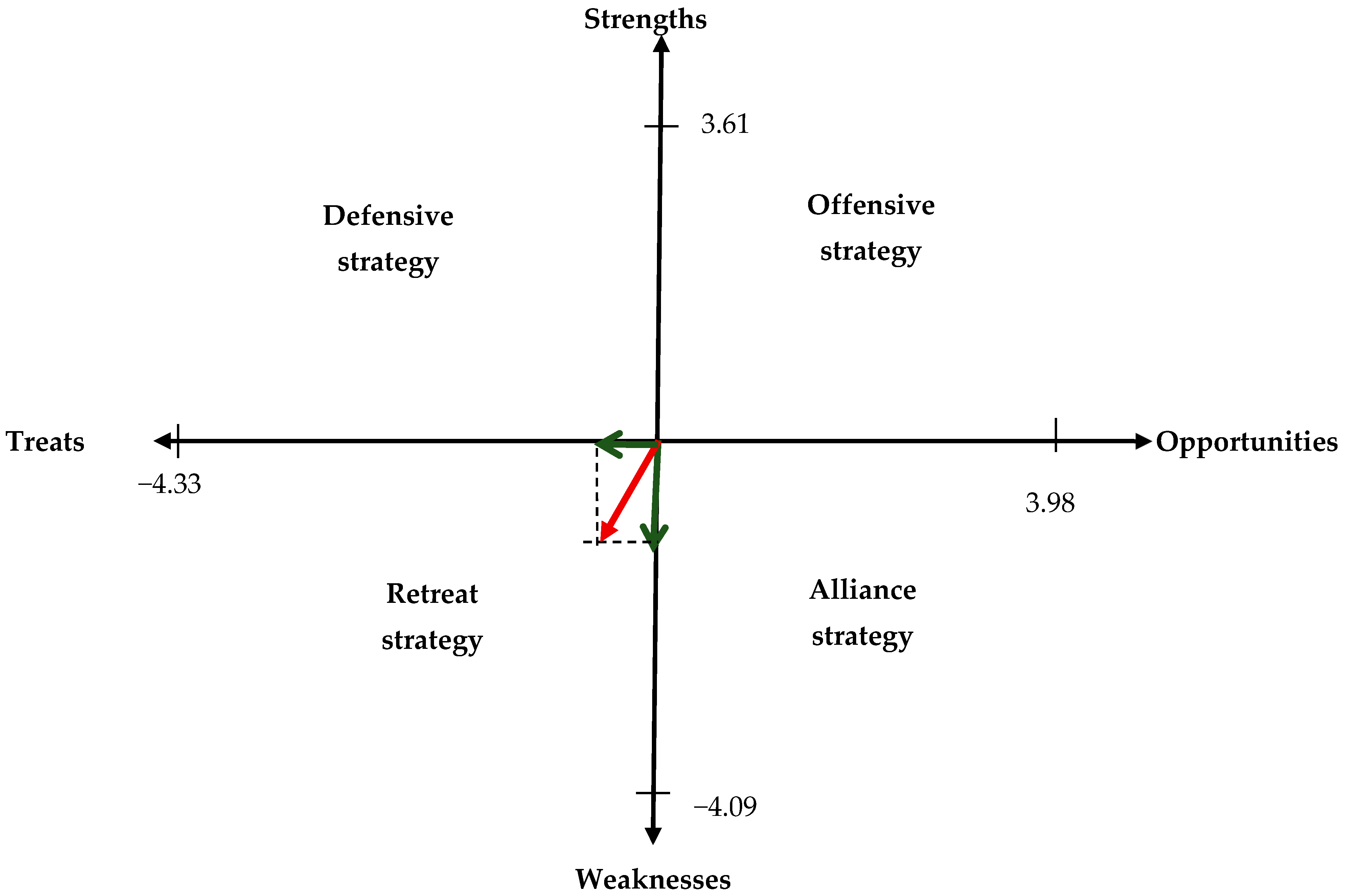
| Value | Explanation |
|---|---|
| 1 | Equivalence of the factors i and j |
| 3 | Slight preference of factor i over j |
| 5 | Strong preference of factor i over j |
| 7 | High preference of factor i over j |
| 9 | Absolute preference of factor i over j |
| Points | Criteria |
|---|---|
| 1 | fits significantly below average |
| 2 | fits below average |
| 3 | fits at an average |
| 4 | fits above average |
| 5 | fits significantly above average |
| Year | 2010 | 2011 | 2012 | 2013 | 2014 | 2015 | 2016 | 2017 | 2018 | 2019 |
|---|---|---|---|---|---|---|---|---|---|---|
| Quantity [kg] | 170 | 100 | 237 | 43,447.5 | 212 | 2925 | 1353 | 1312 | 13,911 | 11 |
| Trade value [1000USD] | 4.73 | 2.69 | 6.12 | 294.44 | 6.33 | 37.33 | 18.3 | 19.12 | 34.57 | 0.92 |
| Year | 2010 | 2011 | 2012 | 2013 | 2014 | 2015 | 2016 | 2017 | 2018 | 2019 |
|---|---|---|---|---|---|---|---|---|---|---|
| Quantity [kg] | 65,212.50 | 0 | 0 | 3780 | 0 | 0 | 0 | 0 | 0 | 0 |
| Trade value [1000USD] | 175.64 | 0 | 0 | 0.05 | 0 | 0 | 0 | 0 | 0 | 0 |
| River | Station | 1961–2000 | 1961–2010 | 2001–2009 | 2001–2010 |
|---|---|---|---|---|---|
| Morava | Moravský Ján | 106 | 106 | 99 | 106 |
| Dunaj | Bratislava | 2061 | 2064 | 2074 | 2076 |
| Váh | Šaľa | 141 | 142 | 135 | 144 |
| Nitra | Nitrianska Streda | 14.6 | 14.4 | 12.4 | 13.6 |
| Hron | Brehy | 45.9 | 45.1 | 37.5 | 42 |
| Ipeľ | Holiša | 2.88 | 2.84 | 2.15 | 2.68 |
| Slaná | Lenartovce | 13.8 | 13.6 | 11 | 12.9 |
| Hornád | Ždaňa | 28.4 | 29.2 | 28.3 | 32.6 |
| Bodva | Nižný Medzev | 0.76 | 0.76 | 0.61 | 0.76 |
| Bodrog | Streda nad Bodrogom | 111 | 112 | 111 | 118 |
| Poprad | Chmelnica | 14.8 | 15.1 | 15.6 | 16.6 |
| Source | Estimated Amount of Source [t.year−1] | Estimated Amount of Available P Compounds [t.year−1] |
|---|---|---|
| surface water | - | 14,933 |
| treated wastewater | - | 285 |
| sewage sludge | 54,583 | 49,125 |
| sewage sludge ash | 0 | 0 |
| urine | 1,446,019 | 433,806 |
| manure | 4,065,329 | 1,626,132 |
| slaughter waste | 2400 | 456 |
| steelmaking slag | 3,053,904 | 4214 |
| Factor/Interaction | S1 | S2 | S3 | S4 | S5 | Si | Ri | αi |
|---|---|---|---|---|---|---|---|---|
| S1 | 1 | 1/5 | 1/3 | 1/5 | 1/3 | 0.00 | 0.34 | 0.05 |
| S2 | 5 | 1 | 3 | 3 | 1/3 | 15.00 | 1.72 | 0.27 |
| S3 | 3 | 1/3 | 1 | 1/5 | 1/5 | 0.04 | 0.53 | 0.08 |
| S4 | 5 | 1/3 | 3 | 1 | 1/3 | 1.67 | 1.11 | 0.17 |
| S5 | 3 | 3 | 5 | 3 | 1 | 135.00 | 2.67 | 0.42 |
| SUM | 6.36 | 1.00 |
| Factor/Interaction | W1 | W2 | W3 | W4 | W5 | W6 | Si | Ri | αi |
|---|---|---|---|---|---|---|---|---|---|
| W1 | 1 | 7 | 5 | 1/3 | 5 | 3 | 175.00 | 2.37 | 0.33 |
| W2 | 1/7 | 1 | 3 | 3 | 5 | 5 | 32.14 | 1.78 | 0.25 |
| W3 | 1/5 | 1/3 | 1 | 5 | 3 | 5 | 5.00 | 1.31 | 0.18 |
| W4 | 3 | 1/3 | 1/5 | 1 | 1/7 | 1/5 | 0.01 | 0.42 | 0.06 |
| W5 | 1/5 | 1/5 | 1/3 | 7 | 1 | 3 | 0.28 | 0.81 | 0.11 |
| W6 | 1/3 | 1/5 | 1/5 | 5 | 1/3 | 1 | 0.02 | 0.53 | 0.07 |
| SUM | 7.22 | 1.00 |
| Factor/Interaction | O1 | O2 | O3 | O4 | O5 | O6 | Si | Ri | αi |
|---|---|---|---|---|---|---|---|---|---|
| O1 | 1 | 5 | 5 | 7 | 9 | 7 | 11025.00 | 4.72 | 0.52 |
| O2 | 1/5 | 1 | 3 | 5 | 3 | 3 | 27.00 | 1.73 | 0.19 |
| O3 | 1/5 | 1/3 | 1 | 3 | 5 | 3 | 3.00 | 1.20 | 0.13 |
| O4 | 1/7 | 1/5 | 1/3 | 1 | 1/3 | 1/3 | 0.00 | 0.32 | 0.03 |
| O5 | 1/9 | 1/3 | 1/5 | 3 | 1 | 1/3 | 0.01 | 0.44 | 0.05 |
| O6 | 1/7 | 1/3 | 1/3 | 3 | 3 | 1 | 0.14 | 0.72 | 0.08 |
| SUM | 9.13 | 1.00 |
| Factor/Interaction | T1 | T2 | T3 | T4 | T5 | T6 | Si | Ri | αi |
|---|---|---|---|---|---|---|---|---|---|
| T1 | 1 | 7 | 5 | 5 | 7 | 5 | 6125.00 | 4.28 | 0.49 |
| T2 | 1/7 | 1 | 1/5 | 1/5 | 1/3 | 1/5 | 0.00 | 0.27 | 0.03 |
| T3 | 1/5 | 5 | 1 | 1/3 | 1/5 | 1/3 | 0.02 | 0.53 | 0.06 |
| T4 | 1/5 | 5 | 3 | 1 | 1/3 | 1/3 | 0.33 | 0.83 | 0.10 |
| T5 | 1/7 | 3 | 5 | 3 | 1 | 3 | 19.29 | 1.64 | 0.19 |
| T6 | 1/5 | 5 | 3 | 3 | 1/3 | 1 | 3.00 | 1.20 | 0.14 |
| SUM | 8.75 | 1.00 |
| Strengths | Weight | Points | Sum | Weaknesses | Weight | Points | Sum |
|---|---|---|---|---|---|---|---|
| importers portfolio | 0.05 | 5 | 0.27 | the absence of P deposits | 0.33 | 5 | 1.64 |
| favorable estimated potential of available P compounds from manure | 0.27 | 3 | 0.81 | technological complexity of P recovery from sources | 0.25 | 4 | 0.99 |
| production of steelmaking slag as a source of Ps | 0.08 | 4 | 0.33 | declining trends in cattle breeding and the amount of manure and urine | 0.18 | 3 | 0.54 |
| favorable estimated potential of available P compounds from urine | 0.17 | 3 | 0.52 | the absence of the P recovery from sewage sludge ash | 0.06 | 5 | 0.29 |
| multiple sources for P recovery | 0.42 | 4 | 1.68 | low estimated potential of available P compounds from sewage sludge | 0.11 | 3 | 0.34 |
| low estimated potential of available P compounds from steelmaking slag | 0.07 | 4 | 0.29 | ||||
| SUM | 3.61 | SUM | 4.09 | ||||
| Opportunities | Weight | Points | Sum | Threats | Weight | Points | Sum |
| the extraction of Gočaltovo P deposit | 0.52 | 5 | 2.58 | lack of governmental support | 0.49 | 5 | 2.44 |
| P recovery from manure | 0.19 | 3 | 0.57 | instability of steel production | 0.03 | 4 | 0.12 |
| P recovery from urine | 0.13 | 3 | 0.39 | the reduction of manure production due to the reduction of cattle breeding | 0.06 | 3 | 0.18 |
| P recovery from river sediments | 0.03 | 3 | 0.10 | the reduction of slaughter waste production due to the reduction of animal waste production | 0.10 | 3 | 0.29 |
| P recovery from surface water | 0.05 | 2 | 0.10 | significant dependence on P import | 0.19 | 4 | 0.75 |
| P recovery from slaughter waste | 0.08 | 3 | 0.24 | low number of potential P deposits | 0.14 | 4 | 0.55 |
| SUM | 3.98 | SUM | 4.33 |
Publisher’s Note: MDPI stays neutral with regard to jurisdictional claims in published maps and institutional affiliations. |
© 2022 by the authors. Licensee MDPI, Basel, Switzerland. This article is an open access article distributed under the terms and conditions of the Creative Commons Attribution (CC BY) license (https://creativecommons.org/licenses/by/4.0/).
Share and Cite
Bakalár, T.; Pavolová, H.; Šimková, Z.; Bednárová, L. Phosphorus Management in Slovakia—A Case Study. Sustainability 2022, 14, 10374. https://doi.org/10.3390/su141610374
Bakalár T, Pavolová H, Šimková Z, Bednárová L. Phosphorus Management in Slovakia—A Case Study. Sustainability. 2022; 14(16):10374. https://doi.org/10.3390/su141610374
Chicago/Turabian StyleBakalár, Tomáš, Henrieta Pavolová, Zuzana Šimková, and Lucia Bednárová. 2022. "Phosphorus Management in Slovakia—A Case Study" Sustainability 14, no. 16: 10374. https://doi.org/10.3390/su141610374
APA StyleBakalár, T., Pavolová, H., Šimková, Z., & Bednárová, L. (2022). Phosphorus Management in Slovakia—A Case Study. Sustainability, 14(16), 10374. https://doi.org/10.3390/su141610374








